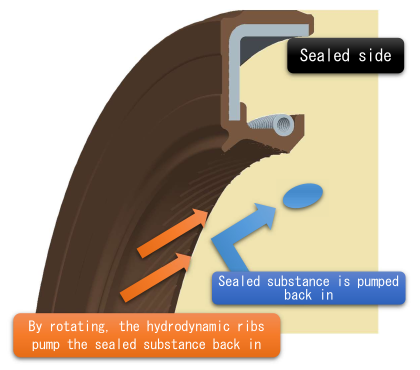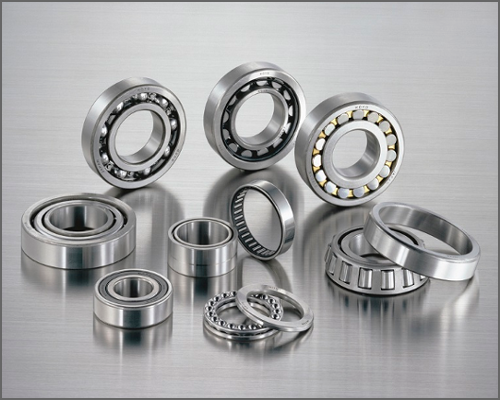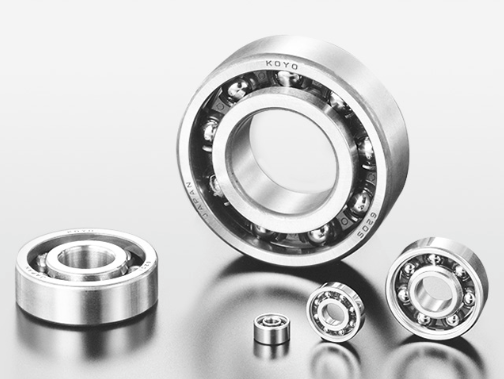Bearing Trivia
Oil Seals (Part 1): The structure, functions, and types of oil seals
- #4 Oil Seals
Oil seals are widely used as sealing devices for machines.
JTEKT's oil seals are described in our catalog, Oil Seals & O-Rings.
However, the catalog uses a large number of technical terms and is very long, so many people seem to have trouble handling it.
Therefore, this series of columns will summarize the following in order:
• The structure, functions, and types of oil seals
• How to select the right oil seal
• Handling of seals, and causes and countermeasures for oil seal failure
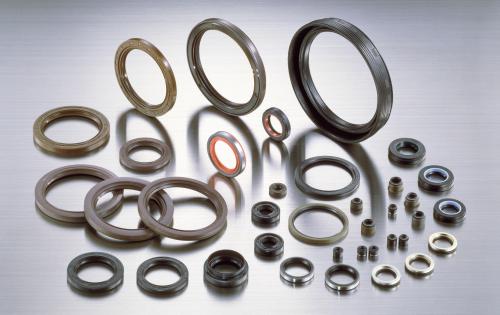
1. What are oil seals?
A wide range of sealing devices are used in various machines.
Sealing devices serve the following functions:
- Prevent leakage of sealed lubricant from inside
- Prevent entry of dust and foreign matter (dirt, water, metal powder, etc.) from outside
As shown in Figure 1, sealing devices come in two types: contact and non-contact.
Oil seals are among the major contact type sealing devices.
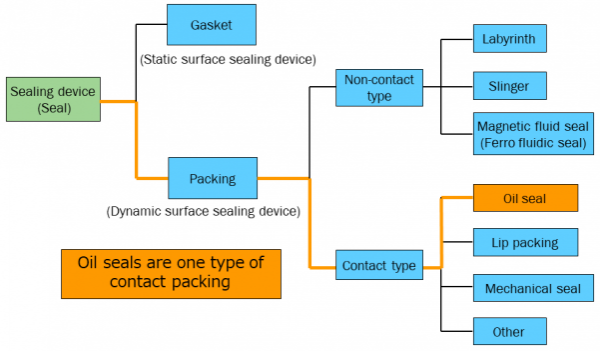
Figure 1: Types of sealing devices
Please see the following for the types of sealing devices for bearings.
How to Select the Right Bearing (Part 7): Components surrounding the bearing
2. Oil seal structure and functions
Oil seals come in various shapes to fit the machines and substances to be sealed.
Figure 2 shows the structure and the names of the various components of the most typical oil seal.
The functions of the various components are also indicated in Table 1.
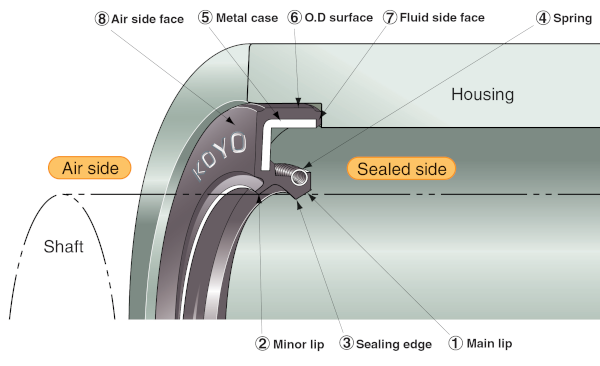
Figure 2: Typically shaped oil seal and component nomenclature
* "KOYO" is a registered trademark of JTEKT.
Table 1: The functions of the various components
| No. | Name | Functions |
| ① | Main lip | The main lip is the most critical component of the seal. Its sealing edge comes in full contact with the shaft surface in order to provide excellent sealing performance. (See Figure 3.) |
| ② | Minor lip | The minor lip prevents the entry of dust and contaminants from outside. Lubricant can be retained in the space between the main lip and the minor lip. |
| ③ | Sealing edge | This refers to the component of the oil seal that makes contact with the shaft. It is wedge-shaped to be pressed against the shaft surface and makes contact with the shaft to ensure sufficient sealing performance and suitability for operation at high peripheral speed. |
| ④ | Spring | The spring supplements the tightening force (i.e., the lip radial load) to ensure enhanced sealing performance and tight contact between the shaft and the sealing edge.The spring also prevents the deterioration of main lip sealing performance caused by high heat or other such factors. |
| ⑤ | Metal case | The metal case provides rigidity to the seal, helping it settle on the housing securely. It also ensures easy seal handling and mounting. |
| ⑥ | O.D. (outside diameter) surface | The O.D. surface affixes the oil seal to the housing and prevents leakage , through the fitting area, of substances to be sealed, while excluding contaminants. |
| ⑦ | Fluid side face | The front-end face of the seal is called the nose. The nose is made of rubber and forms a gasket seal when compressed on the housing shoulder. |
| ⑧ | Air side face | The oil seal surface vertical to the center line of the shaft on the side that does not come in contact with substances to be sealed is called the back face. |
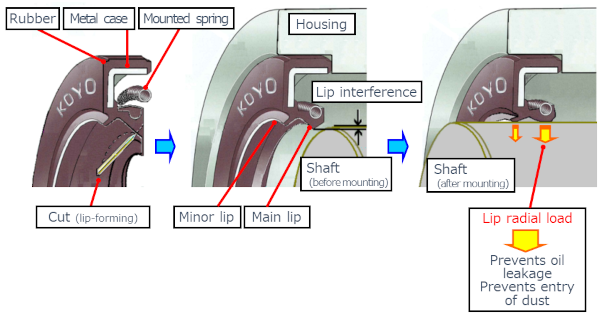
Figure 3: Sealing function of main lip radial load
* "KOYO" is a registered trademark of JTEKT.
Figure 4 shows the features of a JTEKT oil seal.
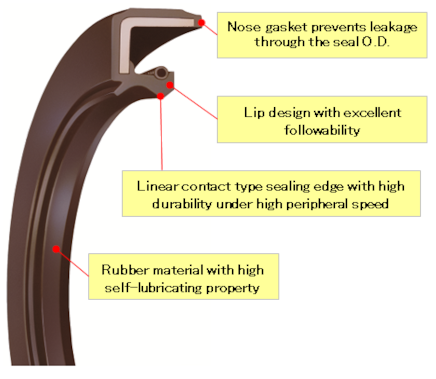
Figure 4: JTEKT oil seal features
For more detailed information, please see the following:
Names and functions of seal components
3. Seal types and numbering system
1) Common seal types and their features
Seals are classified by O.D. wall material, lip type, and whether they have a spring or not.
Major oil seals are specified in ISO 6194-1 and JIS B 2402-1.
Table 2 shows the common types of oil seals, while Table 3 shows the features of each type of oil seal.
Table 4 lists the JTEKT oil seal type codes and corresponding ISO and JIS standards.
Table 2 a): Common types of oil seals (with spring)
| With spring | |||
| Rubber O.D. wall | Metal O.D. wall |
Metal O.D. wall |
|
|
Without minor lip |
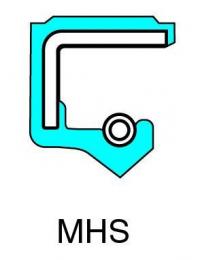 |
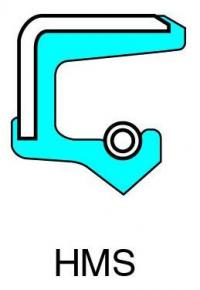 |
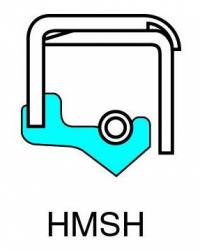 |
|
With minor lip |
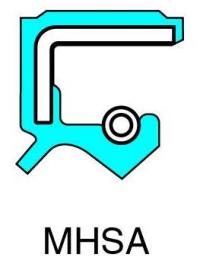 |
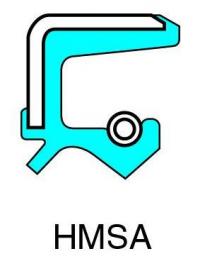 |
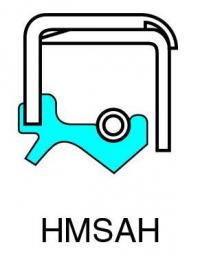 |
Table 2 b): Common types of oil seals (without spring)
| Without spring | ||
| Rubber O.D. wall | Metal O.D. wall | |
|
Without minor lip Type code |
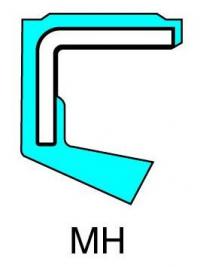 |
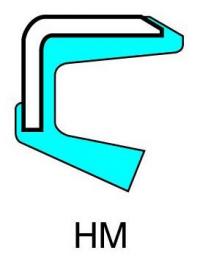 |
|
With minor lip |
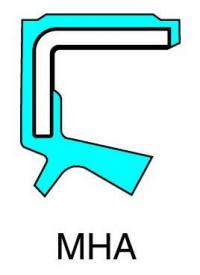 |
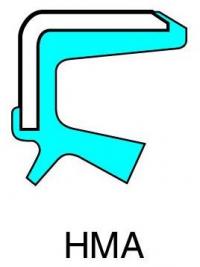 |
Table 3: Features of each seal type
| No. | Type | Features |
| 1 | With spring type | Secures stable sealing performance. |
| 2 | Rubber O.D. wall type | Provides stable sealing performance around the seal O.D. surface. |
| 3 | Metal O.D. wall type | Ensures improved fitting retention between the seal O.D. and the housing bore. |
| 4 | Metal O.D. wall type (with a reinforcing inner metal case) | Protects the main lip. |
| 5 | With minor lip type | Used for applications where there are contaminants, such as dust and foreign matter, on the air side face of the oil seal. |
Table 4: JTEKT oil seal type codes and corresponding ISO and JIS standards
| JTEKT |
ISO 6194-1 1) JIS B 2402-1 2) |
| MHS | Type 1 |
| HMS | Type 2 |
| HMSH | Type 3 |
| MH | - |
| HM | - |
| MHSA | Type 4 |
| HMSA | Type 5 |
| HMSAH | Type 6 |
| MHA | - |
| HMA | - |
Notes
1) ISO: International Organization for Standardization
2) 2) JIS: Japanese Industrial Standard
2) Special seal types and their features
JTEKT provides special seals for use in a wide variety of machines and applications.
Table 5 lists the major special seals, their shapes, and their features.
Table 5: The major special seals, their shapes, and their features
| Name | Type (type code) |
Shape | Features |
|
Helix Seal |
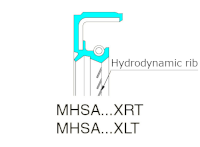 |
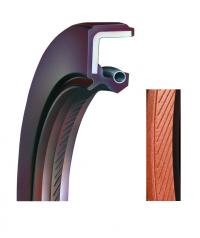 |
The hydrodynamic ribsa) provided in one direction on the air side face of the lip ensure higher sealing performance. |
| Perfect Seal | 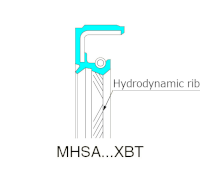 |
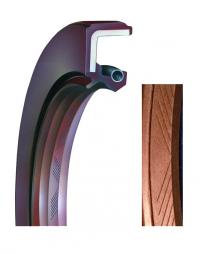 |
The hydrodynamic ribsa) provided in two directions on the air side face of the lip ensure higher sealing performance (higher sealing performance in both rotational directions of the shaft). |
|
Super Helix Seal |
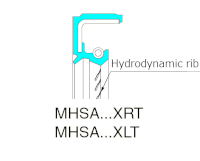 |
 |
The hydrodynamic ribsa) have a two-stepped rib configuration provided in one direction on the air face of the lip. Even if the first rib is worn out, the second rib comes into contact with the shaft surface, meaning that this type of oil seal ensures higher sealing performance. |
| Seal with Side Lip | 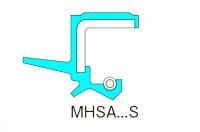 |
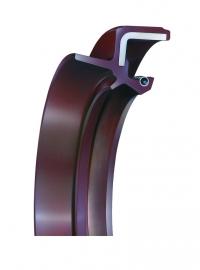 |
A large side lip ensures prevention of entry of dust/water. |
|
a) Function of hydrodynamic ribs |
|||
For more detailed information, please see the following:
Special seal types and their features
3) Seal numbering system
Figure 5 explains the JTEKT seal numbering system.
Seal numbers consist of
(1) the seal type code,
(2) the spring code,
(3) the lip type code,
(4) the dimensional numbers, and
(5) the special type code,
and Table 6 shows examples of each of these codes/numbers.
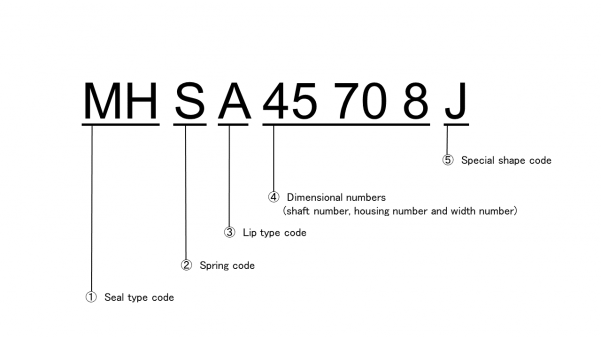
Figure 5: JTEKT seal numbering system
Table 6: Codes and numbers used in seal numbers
| No. | Code and number | Example | |
| ① | Seal type code (*) |
MH: O.D. wall is a rubber material |
|
| ② | Spring code |
No code: without minor lip A: with minor lip |
|
| ③ | Lip type code |
No code: without minor lip A: with minor lip |
|
| ④ | Dimensional numbers | Shaft number | 45: The seal suits the shaft diameter of ϕ45 mm. |
| Housing bore number | 70: The seal suits the housing bore diameter of ϕ70 mm. | ||
| Width number | 8: The seal width is 8 mm. | ||
| ⑤ | Special shape code |
J: Additional code is added here as an identifier when two or more seals have exactly the same type codes and dimensional numbers. |
|
Note: For seal type codes, see Table 2.
4. Example of the applications of seals
Oil seals are used in a great many machines.
1) Oil seals for cars
Oil seals are used in many areas around the car.
Figure 6 shows the places where each seal type is used.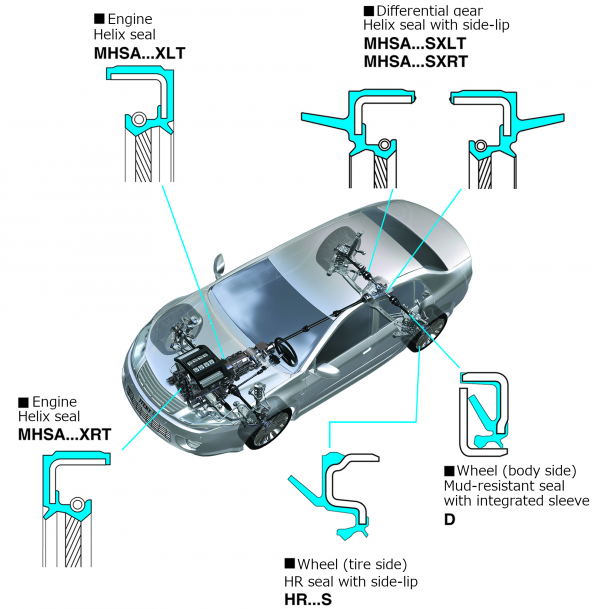
Figure 6: Oil seals for cars
For more detailed information, please see the following:
2) Oil seals for steel production equipment
Oil seals are used in a great many devices for steel production equipment.
Figure 7 shows the places where each seal type is used in a rolling mill.
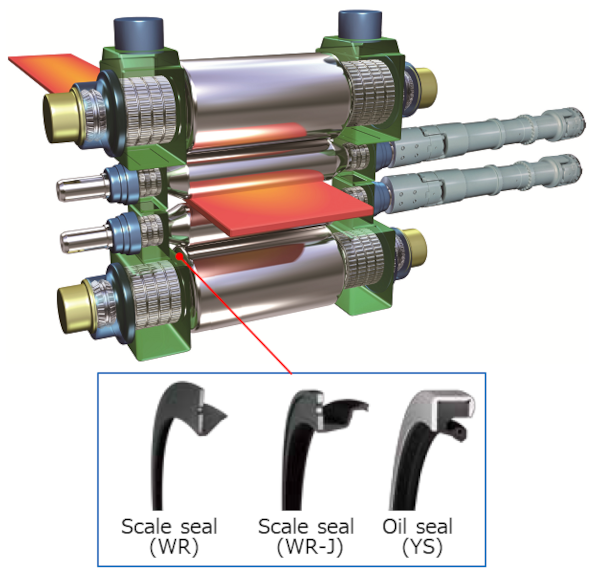
Figure 7: Oil seals for steel production equipment (rolling mill)
For more detailed information, please see the following:
Oil seals for steel production equipment
5. Conclusion
Oil seals are one of the major contact type sealing devices.
• They prevent leakage of the lubricant or other sealed substance, and
• prevent entry of dust and foreign matter (dirt, water, metal powder, etc.) from outside.
Oil seals come in various shapes to fit the machine or substance for sealing.
For this reason, when designing a machine, it is important to select the oil seal that is right for that machine.
Next time, we will explain the key points to consider when selecting your oil seal.
If you have any technical questions regarding oil seals, or opinions/thoughts on these "Bearing Trivia" pages, please feel free to contact us using the following form:
